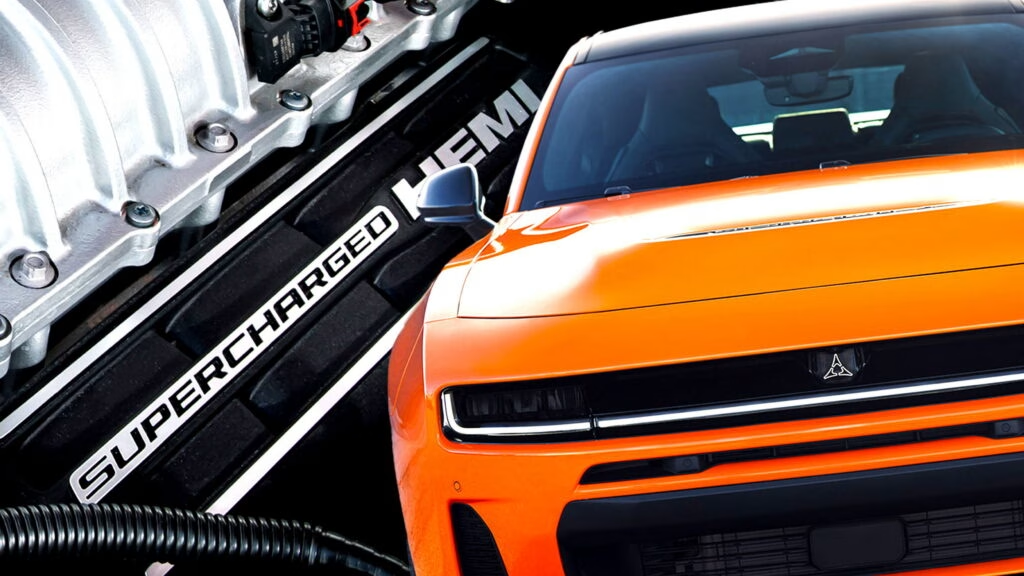Why Did Dodge Drop the Hemi V8, and What Changed Their Mind?
Dodge’s relationship with the Hemi V8 is a bit like an on-again, off-again romance. When the company decided to retire the legendary engine from its Charger lineup, the backlash was swift and loud. Fans weren’t shy about voicing their disappointment—after all, the Hemi V8 is practically a cultural icon for American muscle cars. The move was meant to align with stricter emissions standards and the industry’s push toward electrification, but the reality? Buyers just weren’t ready to say goodbye to that unmistakable V8 rumble.
Fast forward, and Dodge has already started walking back its decision. The Hemi V8 returned to the Ram, then the Durango, and now, rumors are swirling that the Charger could be next. The reason? Consumer demand and a noticeable lack of enthusiasm for the all-electric Charger Daytona and its inline-six sibling. It’s a classic case of listening to your audience—and realizing that sometimes, tradition trumps trend.
Is the New Charger’s Platform Ready for a V8 Comeback?
Here’s where things get interesting. Dodge’s CEO, Matt McAlear, recently hinted that the new STLA Large platform—the backbone of the latest Charger—was designed with flexibility in mind. When pressed about whether a V8 could fit under the Charger’s hood, his response was coy but telling: “Don’t be surprised if it would fit.”
That’s not just corporate speak. The STLA Large platform was engineered to accommodate a range of powertrains, from electric motors to good old-fashioned internal combustion engines. This kind of modularity is rare and, frankly, pretty smart. It means Dodge can pivot quickly based on what buyers want and what regulations demand. With the current political climate easing up on emissions requirements, the timing couldn’t be better for a V8 revival.
Which Hemi V8 Could Dodge Actually Use in the Charger?
Let’s get down to brass tacks. If Dodge does bring back a V8-powered Charger, which engine would make the cut? The 5.7-liter and 6.4-liter Hemi V8s are both available in the Durango, producing 360 hp and 475 hp, respectively. The 6.4-liter seems like the obvious choice for the Charger—it’s got the muscle, the pedigree, and the sound that fans crave.
But there’s a twist. The new 3.0-liter twin-turbo Hurricane inline-six in the Charger already delivers 420 hp in the R/T and a whopping 550 hp in the Scat Pack. That means the six-cylinder is, in some cases, outgunning the V8s. So, why bother with a V8 at all? For many enthusiasts, it’s not just about horsepower. It’s about the visceral experience—the sound, the torque, the nostalgia. Numbers on a spec sheet can’t capture that.
Could the Hellcat V8 Make a Surprise Return?
If you’re dreaming big, you might be hoping for the 6.2-liter supercharged Hellcat V8 to make a comeback. That engine is the stuff of legend, but there are real engineering hurdles. The supercharger is massive, and squeezing it into the new Charger’s engine bay could be a packaging nightmare. Still, never say never. Automakers have pulled off crazier feats when the market demanded it.
How Do Emissions Rules and Politics Affect Dodge’s Plans?
Regulatory winds shift fast, and car companies have to be nimble. Under the previous administration, emissions rules were tightening, which nudged Dodge toward electrification and smaller engines. But with the current administration signaling a more relaxed approach, Dodge is “absolutely flexing into ICE production right now,” as McAlear put it. This isn’t just about nostalgia—it’s about seizing an opportunity while it lasts.
According to a 2023 report from the International Energy Agency, internal combustion engines still account for over 80% of new vehicle sales in the US. That’s a huge market, and Dodge knows it. The company’s willingness to adapt its lineup based on regulatory and consumer signals is a textbook example of business agility.
What Does This Mean for Muscle Car Fans and the Industry?
For die-hard muscle car enthusiasts, the possible return of the Hemi V8 to the Charger is more than just good news—it’s validation. It shows that automakers are still willing to listen to their most passionate customers, even as the industry moves toward electrification. It also highlights a broader trend: flexibility is king. Platforms that can handle multiple powertrains give brands the ability to hedge their bets and keep their options open.
The big takeaway? The future of the Dodge Charger isn’t about perfection—it’s about smarter adjustments. Start with one change this week, and you’ll likely spot the difference by month’s end. Whether you’re a fan of V8 thunder or curious about what’s next, one thing’s for sure: the Charger’s story is far from over.

